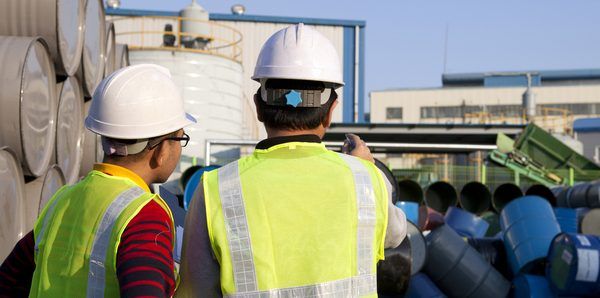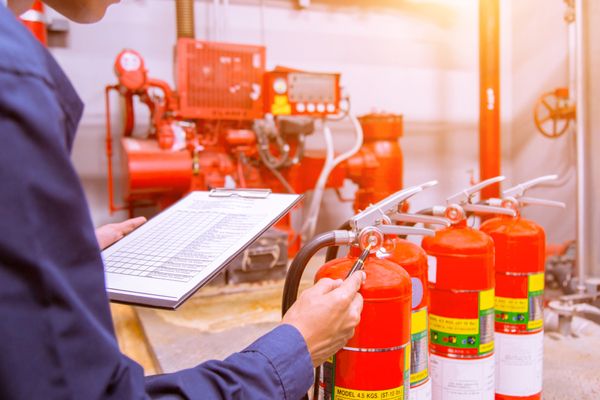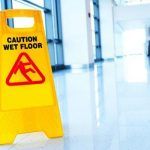Some Recommended Designs For Hazard Reductions At Work
 More often than not, the way you design an area can have great effect on the hazards present in the workplace and on the prevention of incidents. It is quite important to focus on safety designs and before beginning work in a new space, a hazard analysis should be done. Here are four methods known as the Hierarchy of Control, that should be considered when designing a new workspace:
More often than not, the way you design an area can have great effect on the hazards present in the workplace and on the prevention of incidents. It is quite important to focus on safety designs and before beginning work in a new space, a hazard analysis should be done. Here are four methods known as the Hierarchy of Control, that should be considered when designing a new workspace:
- Elimination or Substitution: The most effective method of hazard reduction. Simply eliminating both hazards and hazardous materials from the workplace or substituting them with less hazardous equivalents. This goes for machinery & tools as well.
- Engineering Controls: This refers to any modifications or designs implemented into the environment to improve safe working conditions by reducing exposure to hazards. This can include ventilation systems, enclosures or isolation methods.
 Administrative Controls: This refers to work practices set in place to prepare workers for the potential hazards through proper protocols and education. This also refers to diligence in machinery maintenance, personal hygiene, and housekeeping essential to safety. This can also be limiting the time workers are exposed to hazards, providing adequate rest periods, or controlling personnel allowed to interact with dangerous materials to ensure only those qualified are performing the work.
Administrative Controls: This refers to work practices set in place to prepare workers for the potential hazards through proper protocols and education. This also refers to diligence in machinery maintenance, personal hygiene, and housekeeping essential to safety. This can also be limiting the time workers are exposed to hazards, providing adequate rest periods, or controlling personnel allowed to interact with dangerous materials to ensure only those qualified are performing the work.- Personal Protective Equipment: All equipment required by workers to protect them from hazards in case of an accident or to stay safe when exposed to hazardous materials. This is ranked last as it should never be used as the only line of defence. PPE can fail, so ensuring equipment is inspected regularly for faults is important.
Next we’re going to share some tips to help create hazard-reducing design for your workplace.
- You need to ensure that the designs you choose are in accordance with good practice, as it relates to building, safety, fire and health codes/regulations.
- Ensure that you conduct design reviews and preliminary hazard analyses, in order to eradicate or diminish the workplace’s hazards.
- Ensure that your designs are in compliance with the safety standards and codes necessary, by using registered designs and accredited safety professionals.
- Make sure that the engineering controls are set in place, so that you don’t have to depend so heavily on personal protective equipment or the administrative work procedures to stop any incidents from occurring.
- Link your safety mechanisms with the building design, particularly for the larger mechanical systems.
- Ensure all hazards are clearly identified with alarms, signage, warning systems or other indicators.
- Pay attention to the way you design your building, to ensure safe cleaning and maintenance of interior spaces and building exteriors.
- Ensure that when you design the workplace, you ensure that you provide space for receiving, storing, and handling of materials, whether they be cleaning materials, combustible or perishable items.
- In the event of an incident, ensure staff are properly trained in first aid essentials, as that knowledge can save a life.

ADVANCED CONSULTING & TRAINING OFFERS HAZARD REDUCTION TRAINING
A safe work place is crucial and ensuring that you have the right safety procedures and policies for all areas of the work environment, as well as things like WHMIS-GHS can create a great workspace that is safe and productive. Our diverse team of certified health and safety professionals have taken great pride in their ability to deliver prompt, cost-effective and relevant workplace health and safety solutions. As a CPO approved, TSSA accredited, and WSIB approved provider, we look forward to discussing how ACT can help with your company’s safety requirements through training courses or our safety consulting service. Contact us today for more information on courses such as:


